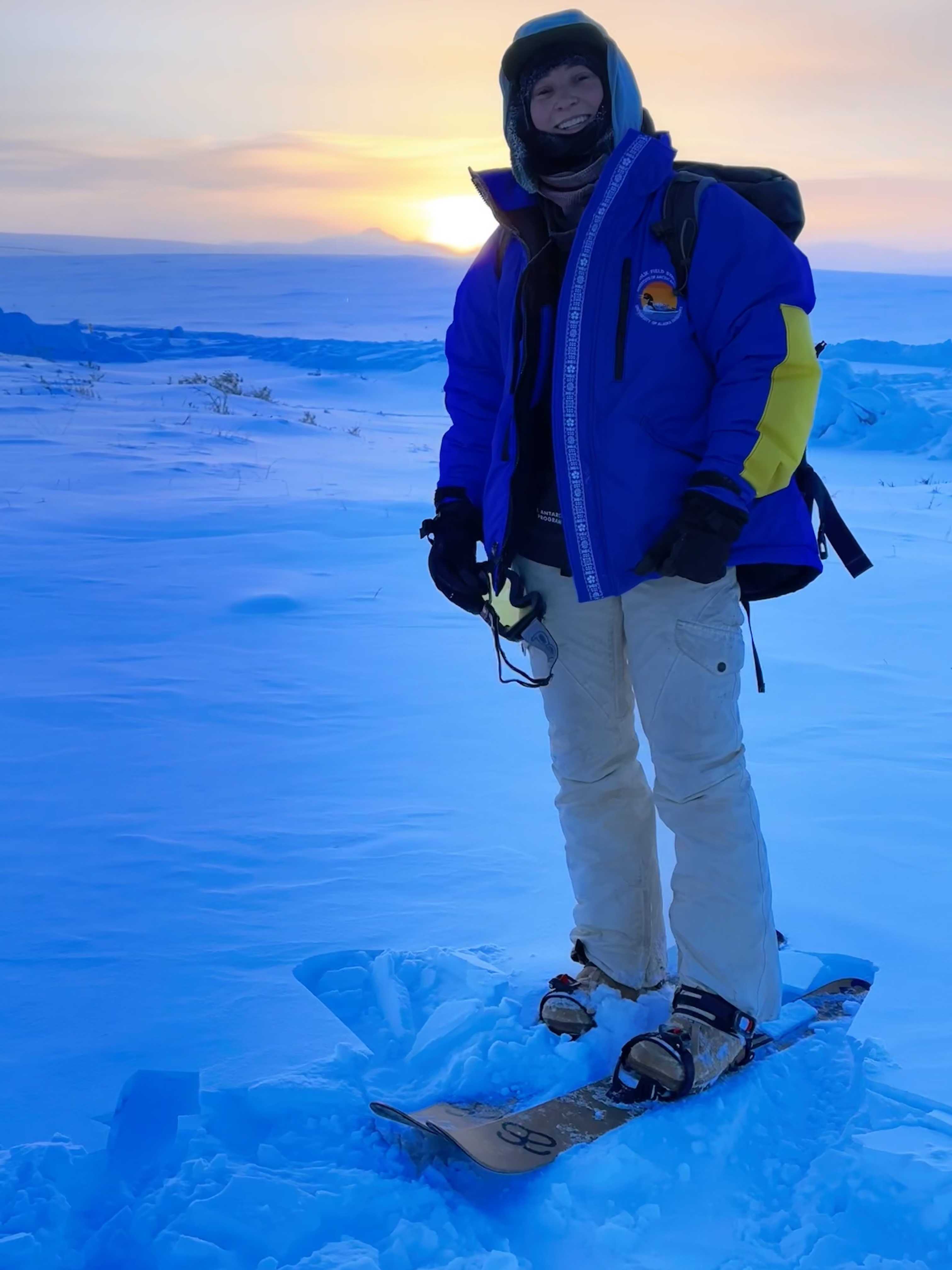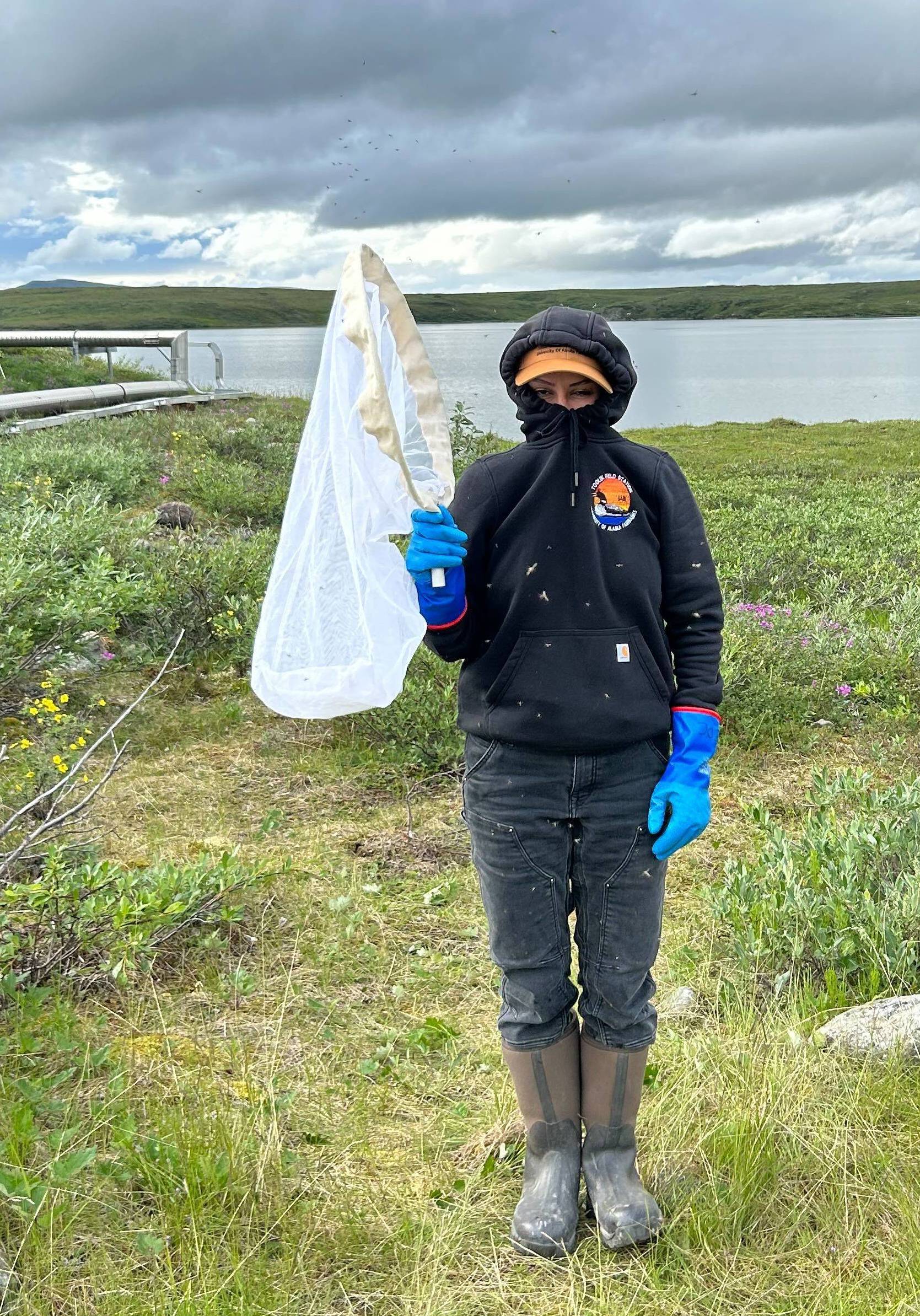Departmental highlights from the Environmental Data Center
February 12, 2024
Amanda Young
907-474-6826

Year-round technician Abby Jackson pauses near the winter sunrise at Toolik Field Station while collecting camera and audio traps as part of the LIFEPLAN partnership in 2024.

Year-round technician and mosquito maven Mayra Meléndez González prepares to collect mosquitos near Toolik Field Station in 2023.
- We hired two amazing, year-round EDC technicians!
The Environmental Data Center welcomed Abby Jackson and returnee Mayra Meléndez González as year-round technicians. Both bring years of experience and expertise in working in cold, polar environments. -
We were the number one contributor to myThaw, a cross-institution initiative to consistently measure active layer and snow depth across the Arctic.
The EDC coordinates with the Terrestrial Multidisciplinary distributed Observatories for the Study of Arctic Connections project, or T-MOSAiC, on its myThaw program. Measurements began in 2021, and the datasets are just starting to be published online. The myThaw project uses a simple app to record the data and photos. During the first year of the project, Meléndez González led troubleshooting of the app along with T-MOSAiC’s scientists and programmers. Since then, Toolik Field Station has been regarded as the program’s “stellar” site due to our consistent measurements and work with the myThaw team to improve the app, only feasible due to having staff at the station year-round.
-
Toolik Field Station is stepping into The Virtual Field and creating 360˚ videos.
We’ve been building our library of 360˚ videos and photos, now available on our website and expanded from our original 360˚ Mapillary street view tour of the station. The new collection includes hiking out to the aufeis at Galbraith Lake, biking across a frozen Toolik Lake in the dead of winter, and conducting fieldwork like climbing the NEON tower or collecting mosquitos.
These videos have been both a lot of fun to create and an effective outreach tool to bring the Arctic to people who might otherwise not be able to visit the station.
To continue these efforts, Amanda Young, Meléndez González, and communications manager Haley Dunleavy joined The Virtual Field, a National Science Foundation Research Coordination Network led by members of the Organization of Biological Field Stations. The network facilitates coordination between field stations and undergraduate faculty members and produces virtual teaching materials, available for all. These include 360˚ videos taken on each solstice and equinox and 2D ecosystem exploration videos that highlight field evidence of ecological processes.
We are looking forward to working with staff and research groups to develop videos and experiences to share with the world at large. If you have any video ideas or would like to join our efforts, reach out to Young, Meléndez Gonzaléz, or Dunleavy.
Figure by Amanda Young
Year at Toolik circular graph showing key meteorological datasets from the EDC. -
We've developed new ways to explore the EDC's long-term datasets.
The Year at Toolik figure displays several variables of our meteorological data in one circular graph. Our new Climate Summaries tool allows you to visualize the station’s temperature and precipitation records from 1988 to 2022. Similarly, you can view the EDC’s daily observations of Arctic animals on Alaska’s North Slope, including mammals, insects, and birds in our new TFS Animal tool, which summarizes Naturalist Journal observations from 2006 to 2023. Select your favorite animal groups and see how their presence near Toolik Field Station changes throughout the years.
Have an idea for a way to explore your favorite EDC dataset? Share it with Amanda Young at ayoung55@alaska.edu.



